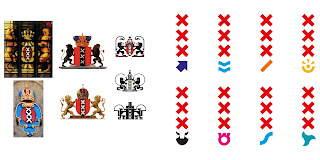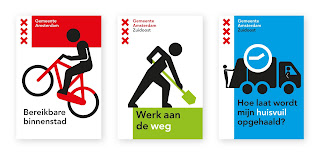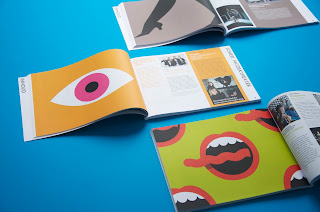There are some fields of design that lend themselves towards modernist design more than others, and these are generally the sort of "cultural projects" referred to by the First Things First Manifesto. The general gist of the list of examples in both the 1964 and 2000 Manifesto's are the same, so the inclusion of street signs in the original would suggest that street signs would also be considered a cultural project by the 2000 edition. The UK's road signs were designed in 1963 by Jock Kinneir and Margaret Calvert. They kept the signs as simple as possible to make the message of each individual sign as clear as possible. The aesthetic this created was a modernist one, which goes a long way to explain why the system doesn't look out of place today.


Moscow Sans is the typeface and set of pictograms designed for the transport systems in Moscow in early 2015 by A2SWHK and Margaret Calvert. Despite the cultural differences between the UK 50 years ago and present day Moscow, the typefaces, pictograms, and the application of Moscow Sans is, like the UK road signs, modernist. The fact that both are successful is an indication that signage in general needs to be modernist to some extent to work successfully. On top of this, the fact that Margaret Calvert, now approaching 80 years old, is still involved in this element of design 52 years on from when she worked on the British system, is somewhat of an indication of Michael Bierut's implied suggestion that this sort of work is only done by a narrow selection of designers;
"Most of the thirty-five signatories are names that will be unfamiliar to the average rank-and-file american graphic designer. Many of them built their reputations by doing “cultural” work on the fringes of commercial graphic design practice as critics, curators, and academics. As designers, their clients generally have been institutions like museums and publishers, rather than manufacturers of nasty things like triple-edged razors, cigarettes, and cereal."
This is somewhat contradictory to the idea making communication free and accessible to everyone as suggested in the 2000 Manifesto.




On the opposite side of this coin there is the fact that there are some fields of design where modernism isn't appropriate. The extreme modernism of the Morrisons Savers range, which is commercial embodiment of accessibility, is somewhat reminiscent of Michael Bierut's invitations for the International Design Centre, arguably a 'cultural project'.
However, the Morrisons Savers design is clearly unsuitable for products such as Vodka and Whisky, which rely on the connotations of their branding to make them desirable. Products such as these now have their own connotations, such as poverty, desperation, and alcoholism, because of their low price, which is made possible because of the lack of commercial activity behind the product. Such connotations stop people form buying the products more often than not, making the design unsuitable.

 When the Morrisons Savers brand of Vodka and Whisky are compared with Smirnoff and Jack Daniels respectively, the difference in connotations are clear. The use of pastiche in the branding provides connotations of history, power, and success, which, when combined with the more refined and aesthetically pleasing visuals make it a much more desirable product, and therefore the branding is more successful, and crucially, more skilful.
When the Morrisons Savers brand of Vodka and Whisky are compared with Smirnoff and Jack Daniels respectively, the difference in connotations are clear. The use of pastiche in the branding provides connotations of history, power, and success, which, when combined with the more refined and aesthetically pleasing visuals make it a much more desirable product, and therefore the branding is more successful, and crucially, more skilful.

Pastiche is also useful in cultural design though, as it's ability to appropriate historical messages and tone help spread a message. A good example of this is the Guerrilla Girls reappropriating their own poster design, in doing so they're using the historical context of the 1989 version to suggest to problem raised in the 2014 version is outdated, while still using the iconic design of the original poster.


Pastiche can even be applied to the technique behind a design as opposed to the visuals of it. This placard was used in a protest rally against Putin's anti-gay rights policies in Moscow early 2015, and was the first time the LBGT flag was used in the protests. The text reads "We won’t give it to Putin a third time", and the obvious home-made look of the placard brings with it connotations of innocence, which isn't something you'd necessarily associate with the LGBT flag, which normally is about pride and passion. The innocence allows a much more emotional connection than a more professionally made placard, which makes it successful.













































